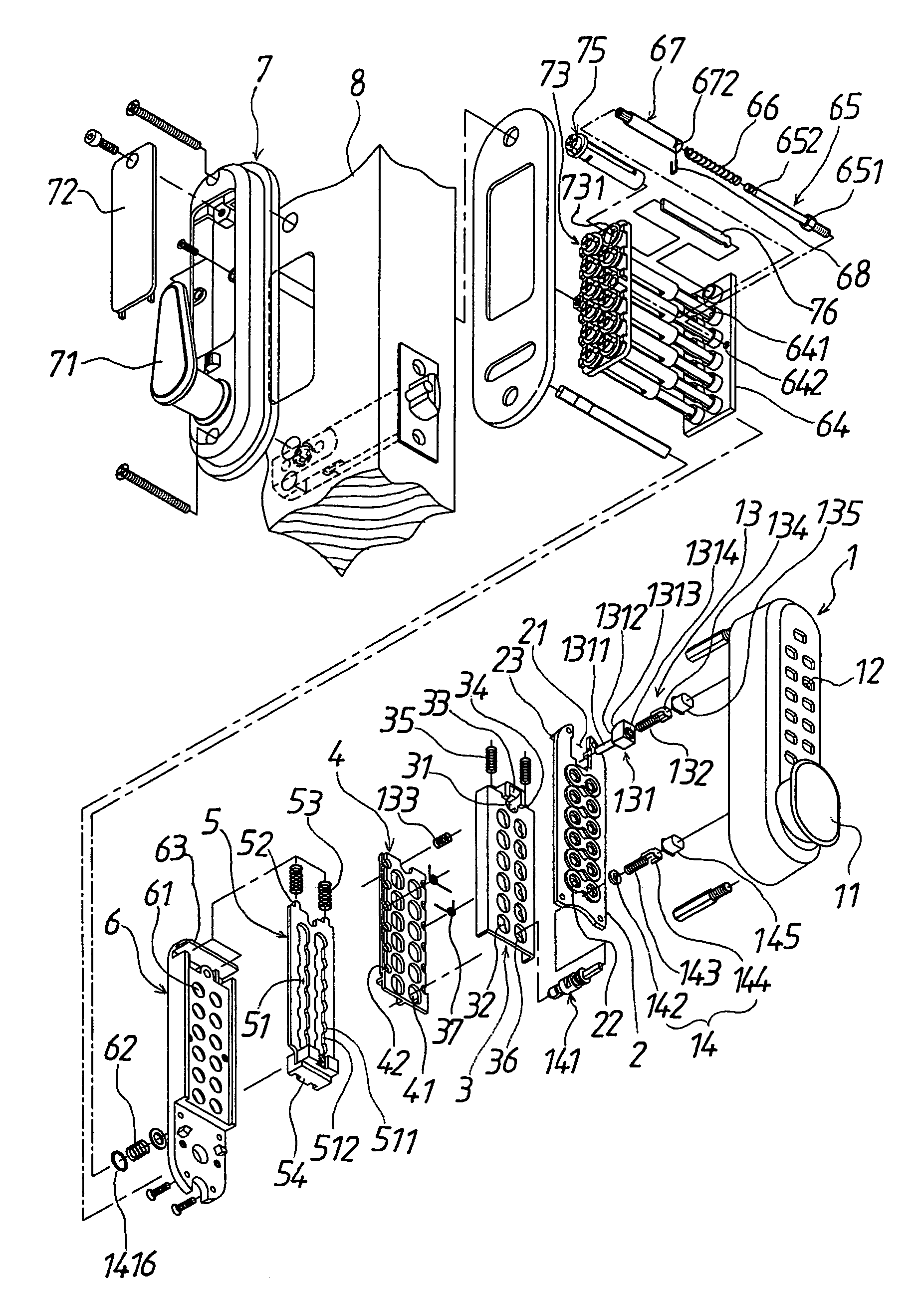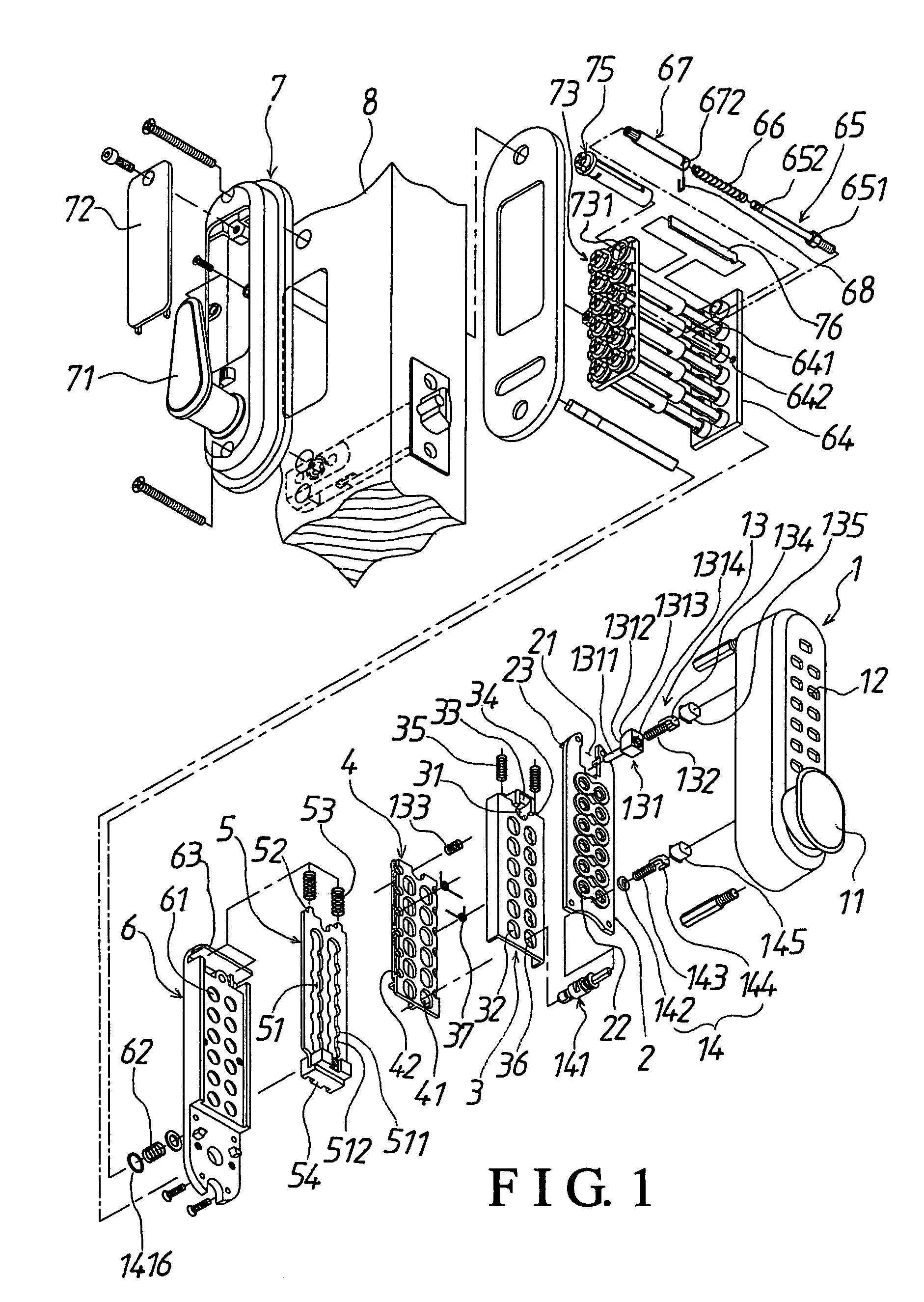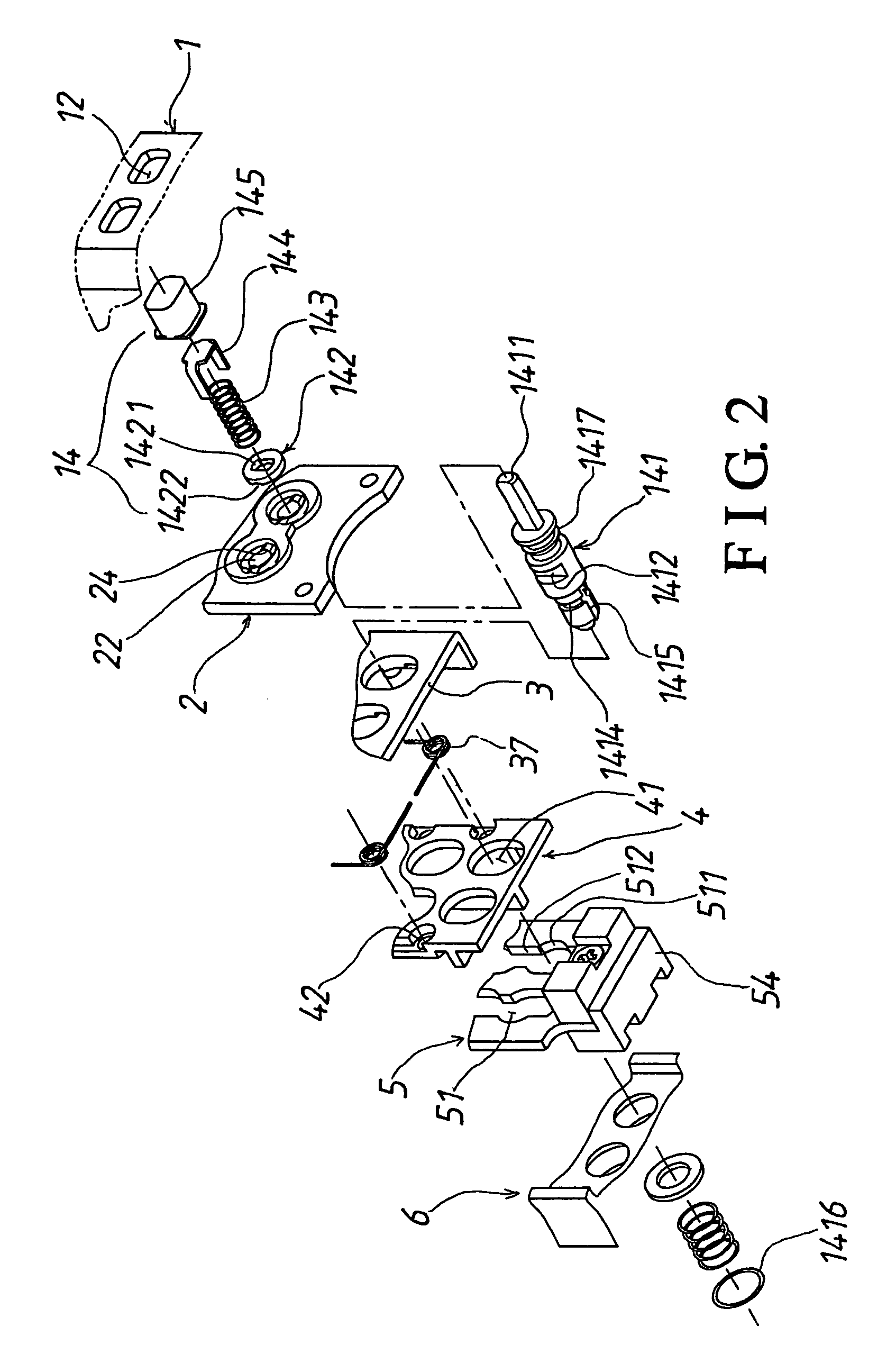Resettable combination lock
a combination lock and lock technology, applied in the field of resettable combination locks, can solve the problems of user trouble with resetting the lock, the locking plate is relative difficult to be removed from the holding hole, and the reset lock takes a lot of time and labor, so as to prevent the displacement of the locking pla
- Summary
- Abstract
- Description
- Claims
- Application Information
AI Technical Summary
Benefits of technology
Problems solved by technology
Method used
Image
Examples
Embodiment Construction
[0050]Referring to FIGS. 1 to 3, a preferred embodiment of a resettable combination lock includes an outdoor member 1 secured on an outer side of a door 8, and an indoor member 7 on an inner side of the door 8.
[0051]The outdoor member 1 includes:
[0052]a housing having a knob 11 connected thereto, and several spaced holes 12 on a front side;
[0053]a restoring button 13 passed through one of the holes 12 of the housing; the restoring button 13 includes a rear pushing post 131, a front spring 132, a rear spring 133, an inner cap 134, and an outer cap 135; referring to FIG. 5 as well, the rear pushing post 131 has a rear post portion 1311, around which the rear spring 133 is passed; the post 131 further has a block portion 1312, which is formed with a slope 1313 on a rear side, and a front recess 1314 holding one end of the front spring 132; the inner cap 134 is fitted on the other end of the front spring 132 while the outer cap 135 is fitted over the inner cap 134, and passes through th...
PUM
 Login to View More
Login to View More Abstract
Description
Claims
Application Information
 Login to View More
Login to View More - R&D
- Intellectual Property
- Life Sciences
- Materials
- Tech Scout
- Unparalleled Data Quality
- Higher Quality Content
- 60% Fewer Hallucinations
Browse by: Latest US Patents, China's latest patents, Technical Efficacy Thesaurus, Application Domain, Technology Topic, Popular Technical Reports.
© 2025 PatSnap. All rights reserved.Legal|Privacy policy|Modern Slavery Act Transparency Statement|Sitemap|About US| Contact US: help@patsnap.com



